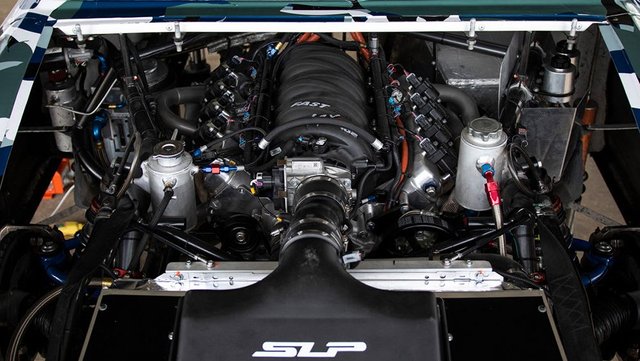Turbocharged Future: The Evolution of Car Engines

In the ever-evolving landscape of automotive technology, one aspect that continues to grab the spotlight is the evolution of car engines. As we move forward into a turbocharged future, the dynamics of how cars are powered are undergoing a remarkable transformation. Let's delve into this exciting journey of engine evolution and explore the turbocharged future that awaits us, taking into account eco-friendly practices such as Eco-Friendly Car Removal in Caboolture
The Rise of Turbocharged Engines
In recent years, turbocharged engines have become increasingly prevalent in the automotive industry. Once reserved for high-performance sports cars, turbochargers are now finding their way into a diverse range of vehicles, from compact cars to SUVs. But what exactly is a turbocharger, and why has it become such a game-changer in the world of automotive engineering?
Understanding Turbochargers
A turbocharger is essentially a forced induction system that compresses the air entering the engine, allowing it to burn more fuel and, consequently, generate more power. This innovative technology enhances an engine's efficiency, providing a notable boost in performance without compromising fuel economy.
Improved Efficiency and Performance
One of the primary advantages of turbocharged engines is their ability to deliver enhanced efficiency and performance. By maximising the air intake, turbochargers significantly increase the power output of an engine. This means that smaller, turbocharged engines can produce power equivalent to larger, naturally aspirated ones.
Fuel Economy Considerations
In the era of heightened environmental awareness, fuel economy is a critical factor in designing car engines. Turbocharged engines address this concern by offering improved fuel efficiency while maintaining robust performance. The smaller size of these engines also contributes to reduced overall vehicle weight, further enhancing fuel economy.
Downsizing without Compromising
The turbocharging trend has led to a downsizing phenomenon in the automotive industry. Car manufacturers are increasingly opting for smaller, turbocharged engines without sacrificing power. This downsizing not only supports fuel efficiency but also aligns with the growing preference for more compact and environmentally friendly vehicles.
Challenges and Innovations
While turbocharging brings numerous benefits, it is not without its challenges. Issues such as turbo lag and increased heat generation require constant innovation. Automotive engineers are continually refining turbocharger technology to overcome these challenges, ensuring a seamless and responsive driving experience.
Visit website: https://www.cashforunwantedcars.com.au/
The Road Ahead
As we embrace the turbocharged future, the automotive industry is poised for even more exciting developments. Electric turbochargers, hybrid powertrains, and advanced materials are on the horizon, promising a new era of efficient and eco-friendly vehicles. The turbocharged future not only transforms the way we drive but also represents a pivotal step towards sustainable and forward-thinking automotive engineering.
Versatility in Vehicle Design
The widespread adoption of turbocharged engines has also given designers more flexibility in shaping the vehicles of tomorrow. Smaller, more efficient engines allow for innovative design choices, influencing the overall aesthetics and functionality of automobiles. This versatility aligns with the evolving tastes and preferences of modern consumers who seek a harmonious blend of performance and style.
Environmental Considerations
In addition to their performance benefits, turbocharged engines contribute to environmental sustainability. The efficiency gains and reduced fuel consumption associated with turbocharging play a role in minimising the carbon footprint of vehicles. As environmental consciousness continues to grow, turbocharged engines emerge as a pragmatic solution to balance performance and ecological responsibility
Adoption Across Vehicle Classes
What makes the turbocharged future particularly intriguing is its democratisation across different vehicle classes. Initially synonymous with high-performance sports cars, turbocharging has transcended those boundaries. Today, it is not uncommon to find turbocharged engines in family sedans, SUVs, and even hybrid vehicles. This widespread adoption signifies the acceptance and recognition of turbocharging as a mainstream and reliable automotive technology.
Collaborative Industry Efforts
The journey towards a turbocharged future is a collaborative effort within the automotive industry. Manufacturers, engineers, and designers are working hand in hand to push the boundaries of innovation. This collective commitment is evident in the constant refinement of turbocharger technology, ensuring that its benefits are accessible to a broad spectrum of drivers.
Technological Synergy with Other Advancements
Turbocharged engines are not standalone innovations; they synergize with other technological advancements shaping the automotive landscape. Integration with smart technologies, connectivity features, and autonomous driving capabilities further positions turbocharged vehicles as integral components of a comprehensive and interconnected transportation ecosystem.
Conclusion
In conclusion, the evolution of car engines towards a turbocharged future marks a significant chapter in automotive history. Turbochargers have revolutionised the industry by enhancing efficiency, performance, and fuel economy. As we navigate this dynamic landscape, the road ahead holds the promise of further innovations, solidifying the turbocharged engine as a cornerstone of the modern automotive experience.